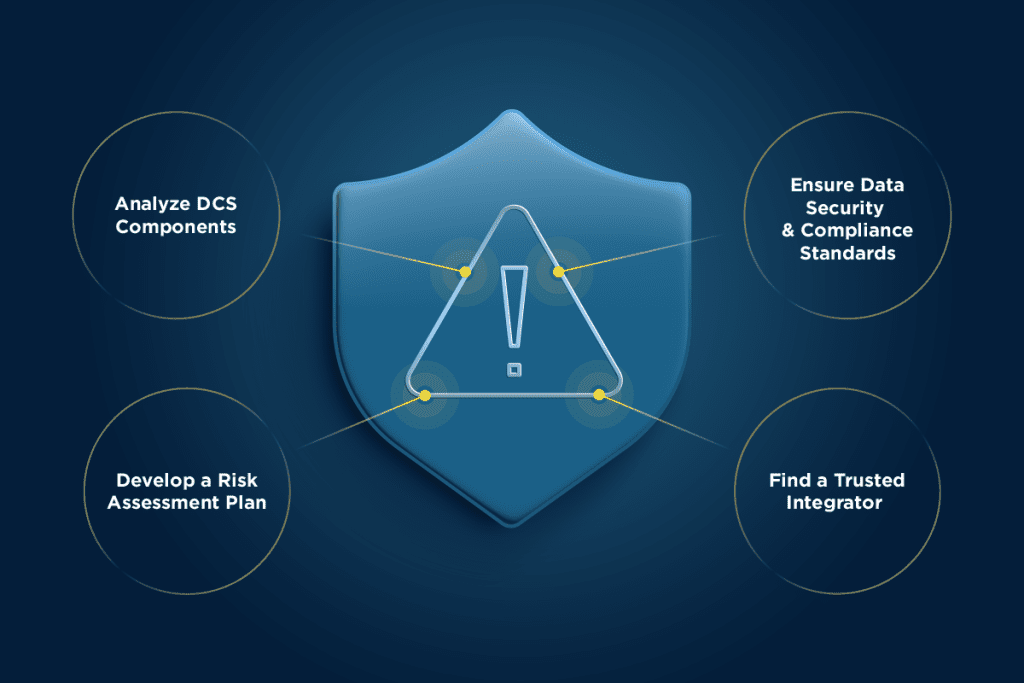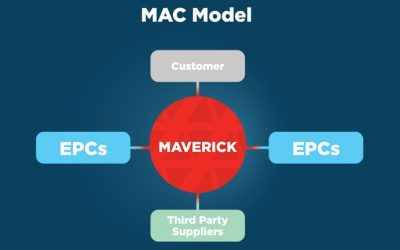Four Essential Tips to Mitigate Risk in a DCS Migration Project
Shop-floor personnel know well the challenges of maintaining a distributed control system (DCS), especially one that has been around for 30-plus years. They also know, change is inevitable in today’s digital-first working world. An obsolete DCS is not sustainable. Planning a DCS upgrade or migration is essential for taking advantage of new digital technologies and capabilities, such as advanced data analytics, artificial intelligence (AI), machine learning, cloud computing, and so much more.
Despite the benefits, complex projects such as a migration usually carry significant risk, which may inhibit those plans for progression. To help you mitigate risk, we have compiled four tips from our industry thought leaders to ensure your DCS upgrade or migration project moves forward without compromising safety or compliance.
1. Analyze DCS Components
You are the conductor, and your DCS is the orchestra. Each individual instrument or part is a separate component of the overall system, yet when working together they combine to create beautiful symphonies within your plant or factory. Analyzing how your current DCS interfaces with different parts of your business is critical to a successful upgrade or migration process.
Consider the role of the control system’s components and identify the impact they will have on the system when changes are made to a particular part. Although it is sometimes tempting to make changes without thoroughly understanding the current state, this can lead to issues later. To quickly get up-to-speed on the process, enlist help from a third-party system integrator – one who takes a holistic approach to DCS migrations, offering invaluable expertise and experience in operational technology for a seamless transition.
2. Develop a Risk Assessment Plan
An experienced head coach preparing for a championship game knows the importance of providing their team with an extensive game plan. What do we need to do to win? What can we expect? How does our currently constructed roster stack up against our opposition? To hoist the trophy of a successful migration or upgrade, you must get through the resistance or risks associated with the process. A risk assessment plan helps ensure a smooth and successful DCS migration with minimal disruption to operations.
Prior to creating a risk assessment plan for a migration, it is important to identify, analyze and assess any potential risks to reduce their impact on the project, including compatibility issues between hardware and software, operational disruptions or downtime, or mistakes occurring during the setup or configuration. Additionally, keep in mind that changes in scope, schedule and budget are all inherent risks in a project of this magnitude — unexpected problems during the process can lead to drastic outcomes beyond expectations and result in unforeseen costs.
A risk assessment plan includes specific strategies to reduce or eliminate each risk. Your plan should include a comprehensive review of the new system, identification of risks and their impacts, an implementation plan for minimizing these risks, and contingency plans in case problems arise. The plan should also include regular reviews to ensure that the upgrade or migration meets overall company objectives and is executed as planned.
Doing your due diligence and creating a risk assessment plan upfront will likely save you big headaches down the road.
3. Ensure Data Security and Compliance Standards
Just like we feel secure in using new technology to connect and network with other people from our personal devices, we want that same sense of connectivity and security with a new DCS. Reaping the benefits of modern DCS capabilities is a high priority despite the idea of a chaotic upgrade or migration, but what’s also important is maintaining a secure connection between existing and new systems. This proper precaution will ensure data security and compliance while protecting your precious data during the processing cycle.
Be vigilant about data integrity, employing measures such as data encryption, authentication protocols, auditing tools and cybersecurity solutions. Threats and bad actors are out there. As plants become more interconnected and dependent on networks, vulnerabilities increase and risks stack up. Assessing and mitigating risk upfront for your legacy equipment and open systems can benefit you tremendously in the long run.
Being aware of network traffic levels can help identify potential data breach risks. Organizations can protect sensitive data from potential threats by paying attention to data security and compliance at every step along the data collection process.
4. Find a Trusted Integrator to Help Navigate Change
At the end of the day, every superhero needs a team. Investing in a third-party systems integrator can be an immensely beneficial decision, no matter the project’s complexity. A systems integrator brings extensive technical knowledge and experience working on multiple migration projects to the table and can help augment internal resources. Tapping their expertise helps streamline the migration process, ensuring higher satisfaction from users after its implementation and resulting in a successful project overall.
Upgrading or migrating to a new DCS is never easy. Understanding and analyzing the existing system and services is essential for a smooth transition. You must devise and execute a risk assessment plan to minimize any potential risks of the upgrade or migration. Furthermore, data security and compliance standards must be considered before beginning the process. Professionals should be consulted for assistance and guidance throughout the process where needed. With minimal disruption to operations, companies can move toward optimized control systems that allow plant personnel to focus on more business-critical activities like innovation and growth.
Ultimately, these plans make workflow more efficient while allowing users access to the latest data without worrying about manual update processes, often leading to errors.
Visit our DCS migration page for more tips and other information to help you along your digital transformation journey!



